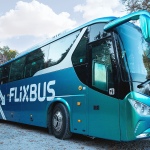
City Buses: Navigating Urban Landscapes with Convenience and Efficiency
- Post
- August 22, 2023
- Buses, City Buses, Transportation
- 0 Comments
In the bustling urban landscapes of today, where time is a precious commodity and connectivity is essential, city buses emerge as a dynamic solution for efficient travel. With the urban sprawl constantly expanding, the need for sustainable, accessible, and comfortable public transportation has become paramount. At [Your Company Name], we delve into the realm of city travels by bus, shedding light on the many facets that make them the lifelines of metropolitan existence.
Embracing the Pulse of Urban Mobility
In the midst of honking horns and skyscrapers, city buses weave their way through the intricate tapestry of city life, offering a mode of transportation that is both practical and eco-friendly. Whether it’s the daily commute to work, exploring the city’s attractions, or simply getting from point A to B, city buses stand as a testament to mobility’s evolution. In this comprehensive exploration, we delve into the myriad advantages, innovative features, and operational insights that underscore the significance of city buses.
Advantages of City Buses: Urban Mobility at Its Best
City buses play a pivotal role in addressing traffic congestion and reducing carbon footprints. Their benefits extend beyond mere transportation; they shape the urban fabric by fostering community interaction and reducing private vehicle reliance. By offering an affordable alternative, city buses contribute to a greener environment and decreased air pollution. This transformative shift toward sustainable travel is driving cities to invest in modernizing their bus fleets, introducing cleaner fuel options, and enhancing connectivity.
Enhancing Passenger Experience: Comfort and Connectivity
Modern city buses are not just vehicles; they are mobile hubs of comfort and connectivity. Equipped with amenities such as Wi-Fi, USB charging ports, and ergonomic seating, they transform the daily commute into a productive and enjoyable journey. With real-time GPS tracking and passenger information systems, commuters can stay informed about routes and schedules, empowering them to plan their trips effectively. These features redefine the passenger experience, making city buses an attractive choice for both regular travelers and tourists.
Innovative Infrastructure: Dedicated Bus Lanes and Smart Stops
Cities around the world are prioritizing efficient public transportation through dedicated bus lanes and smart stops. These initiatives expedite travel by minimizing congestion and reducing travel times. Dedicated lanes ensure that city buses glide through traffic, ensuring on-time arrivals and departures. Smart stops, equipped with real-time information boards and shelters, enhance the waiting experience, promoting the use of public transportation.
Sustainability at the Core: Eco-Friendly Travel
In an era where sustainability is paramount, city buses stand as eco-friendly alternatives to personal vehicles. With advancements in technology, many buses now run on clean fuels such as compressed natural gas (CNG) or electricity, significantly reducing emissions. These sustainable choices align with the global commitment to combat climate change and promote greener modes of travel.
Investing in the Future: Technological Advancements in City Buses
The realm of city buses is not untouched by technological advancements. Autonomous buses and electric fleets are revolutionizing the industry, promising quieter, cleaner, and safer journeys. With features like collision avoidance systems, lane departure warnings, and adaptive cruise control, these buses are shaping the future of urban mobility. Moreover, the integration of predictive analytics ensures efficient route planning, optimizing travel times and reducing fuel consumption.
Safety First: Ensuring Passenger Well-being
City buses prioritize passenger safety through meticulous maintenance and adherence to safety regulations. Routine inspections, training programs for drivers, and emergency response protocols contribute to a secure traveling environment. The integration of surveillance cameras and panic buttons further bolsters passenger confidence, making city buses a reliable mode of transportation.
Final words
In the mosaic of urban dynamics, city buses emerge as the threads that bind communities together. Their role in reducing traffic congestion, curbing emissions, and enhancing connectivity cannot be overstated. At [Your Company Name], we celebrate the evolution of city travels by bus, advocating for sustainable and efficient solutions that redefine urban mobility.
Commonly Asked Questions
Q1: How frequently do city buses operate?
A: City buses usually operate on fixed schedules, with intervals ranging from 10 to 30 minutes during peak hours, ensuring convenient access for commuters.
Q2: Are city buses accessible for people with disabilities?
A: Yes, many modern city buses are equipped with features such as wheelchair ramps, priority seating, and audible announcements, ensuring accessibility for all passengers.
Q3: Can I track the location of city buses in real time?
A: Absolutely, most city buses are equipped with GPS tracking systems that allow passengers to monitor their location in real time through mobile apps or online platforms.
Q4: Are city buses more cost-effective than private vehicles?
A: Yes, city buses are generally more cost-effective when compared to the expenses associated with owning and maintaining a private vehicle, including fuel, parking, and maintenance costs.
Q5: How can I stay updated about any route changes or disruptions?
A: Many city transit agencies provide real-time updates through official websites, mobile apps, and social media channels, ensuring passengers are informed about route changes, delays, or disruptions.






